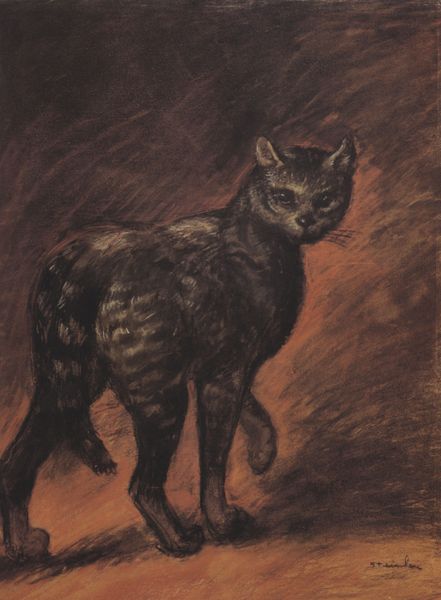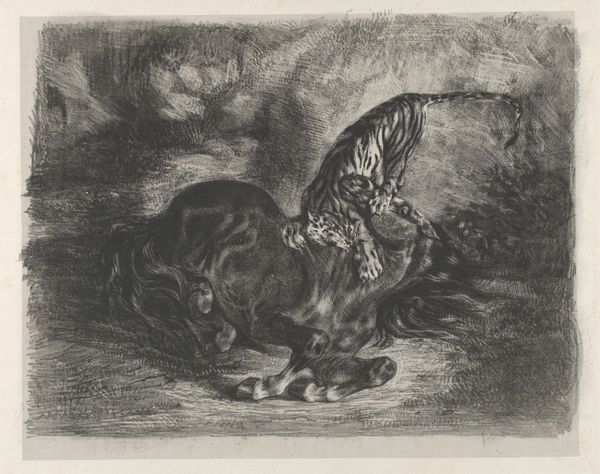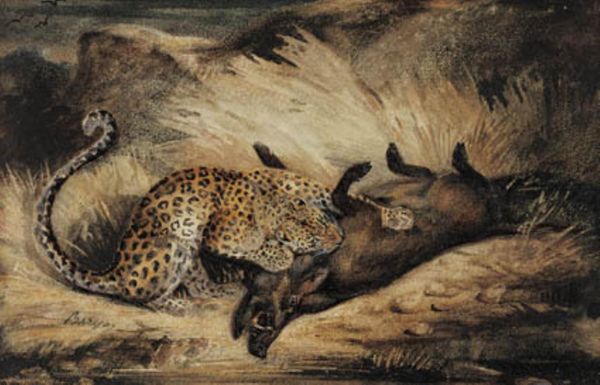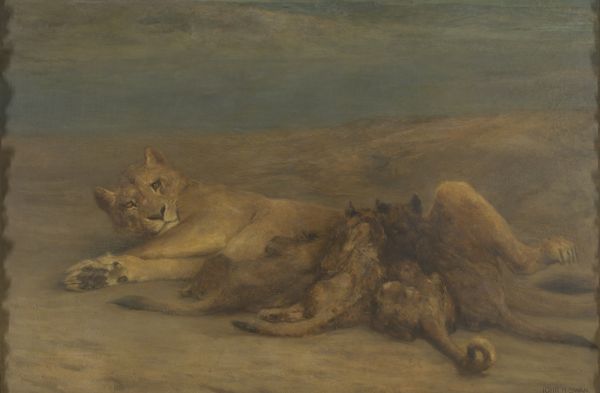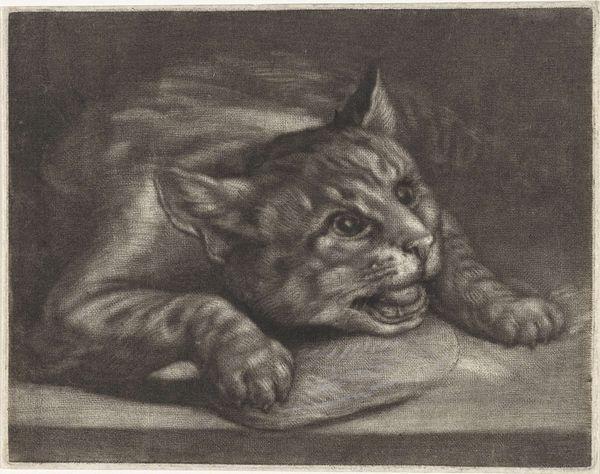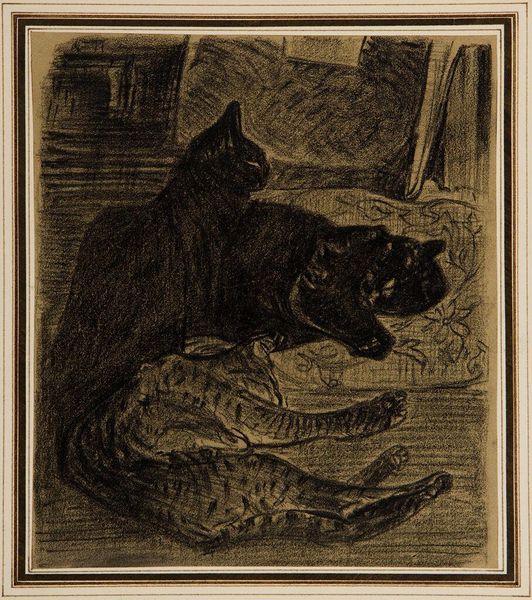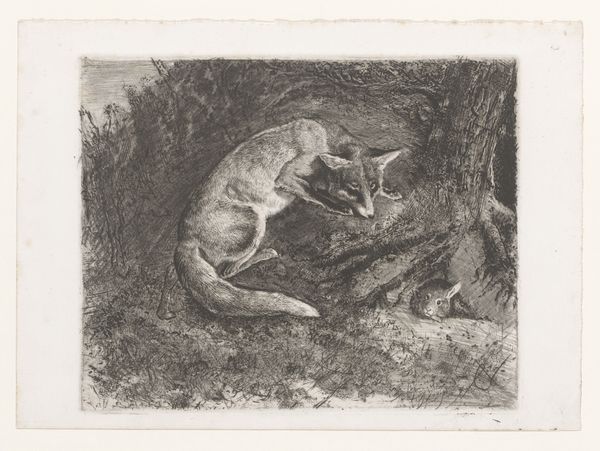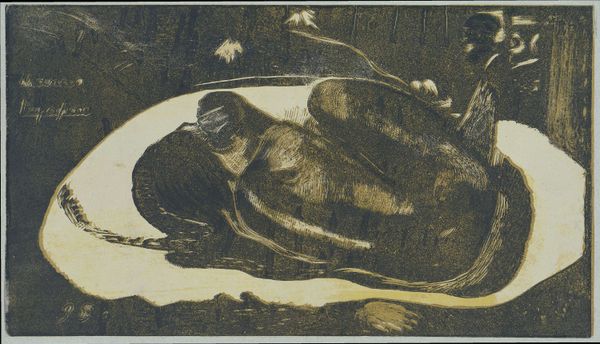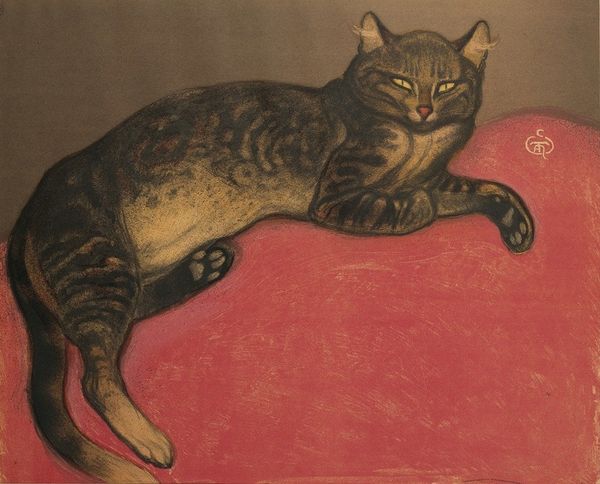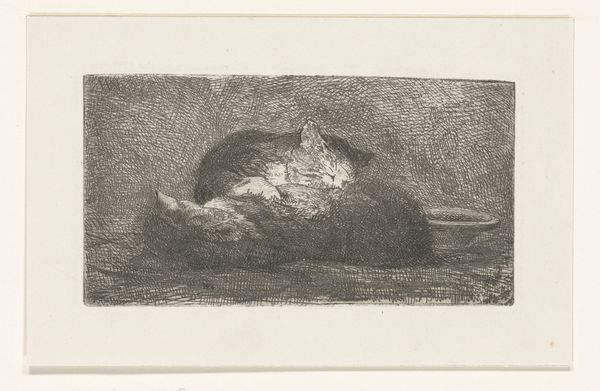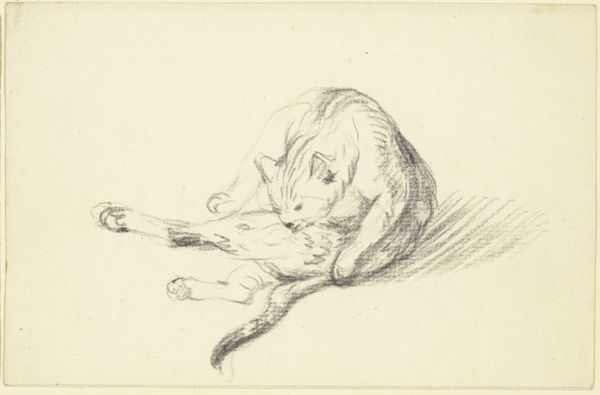
Copyright: Public domain
Curator: Let’s take a look at Théophile Alexandre Steinlen’s “Cats on the Sofa,” painted in 1908. Editor: My first impression? Utter tranquility. There's something so inherently peaceful about sleeping animals, especially rendered with this level of detail in the brushwork. You can almost feel the softness of their fur. Curator: Steinlen, though often associated with the Parisian avant-garde, was deeply interested in representing everyday life, particularly the lives of the working class. Cats, as a recurring motif in his oeuvre, offered him a unique lens. The imagery had growing public appeal at the time. Editor: Absolutely. Cats, especially in the late 19th and early 20th centuries, began to transcend their historical association with witchcraft or lower-class domesticity and became, to a degree, symbols of bourgeois comfort and domesticity. Their quiet independence could be read in various ways, speaking perhaps to shifting roles for women at the time. The black cat could signal something darker or suggest something mysterious in feminine power. Curator: Indeed. One can see how his images tapped into broader conversations about the position of women and workers in society. What do you make of the Impressionistic handling of light? The details of the sofa for instance are washed out in shadows and blurry brushstrokes. Editor: The looser brushwork contributes to the sense of ease. But, more importantly, Steinlen is highlighting the subjectivity inherent in domestic life and its relationship with a quiet revolt in society. The home, even with cats lounging luxuriously, can be a place of profound tension. They seem like a commentary on the social constraints, even as he idealizes them. It is the very personal revolt that cats naturally represent as both domesticated and utterly free-willed beings. Curator: Very astute. It also underscores Steinlen's connection to his contemporaries like Toulouse-Lautrec or even Degas in that quiet moments are seen through a critical lens. Ultimately, "Cats on the Sofa" functions as more than a simple genre scene. Editor: A visual meditation on societal shifts and an ongoing cultural embrace of comfort with an underlying edge. It definitely deserves further reflection, even after this audio tour.
Comments
No comments
Be the first to comment and join the conversation on the ultimate creative platform.
